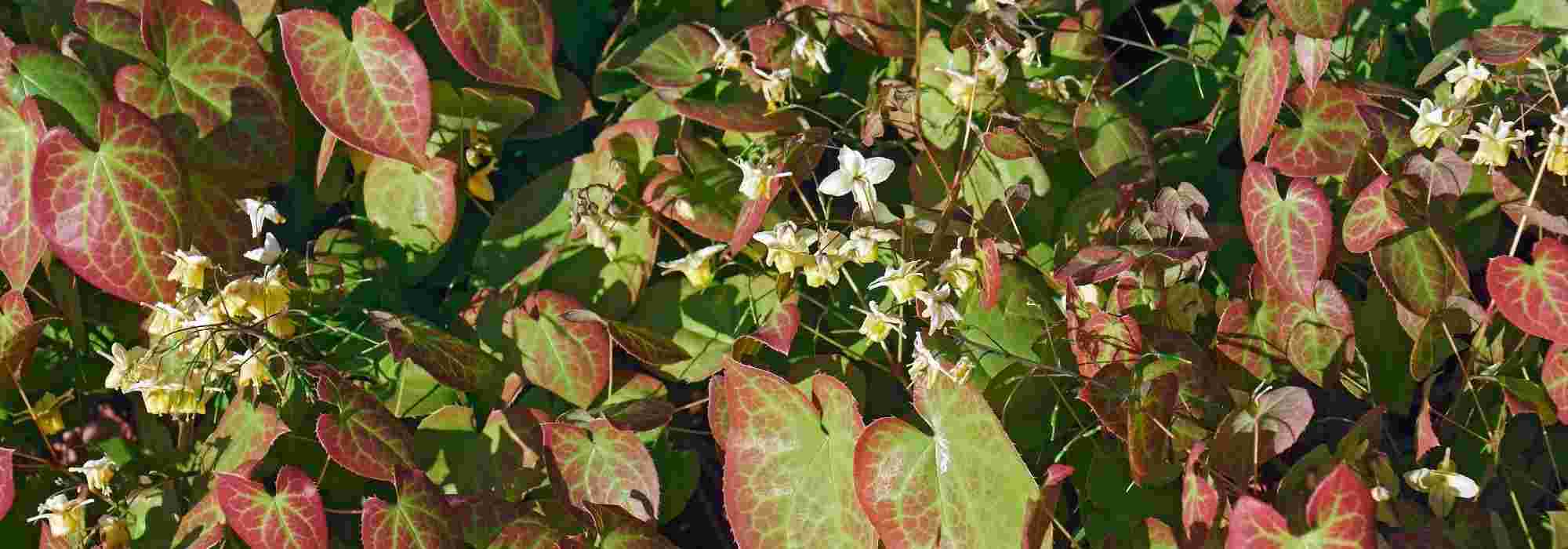
7 evergreen spikes
Decorative all year round in the garden
Contents
Also known as “elf flowers” or “bishop’s hat”, the epimediums are remarkable groundcover plants with foliage that can take on stunning warm hues. There are many species and varieties of epimediums, which can be deciduous (including Epimedium grandiflorum) or evergreen (for example, Epimedium warleyense, Epimedium versicolor, and Epimedium alpinum). The latter retain their leaves in winter, remaining decorative throughout the year, even in winter when other plants are dormant. Note that some epimediums are semi-evergreen (such as Epimedium ‘Amber Queen’): they keep their leaves in winter in a mild climate but lose them if temperatures become too cold for them. Here, we present our selection of favourite evergreen epimediums, along with some ideas for pairing them.
Epimedium warleyense
Thanks to its warm hues, Epimedium warleyense is ideal for brightening shaded areas throughout the year. In April/May, this evergreen flower produces a multitude of vibrant flowers in shades of orange-pink and pale yellow. Each floral stem can bear up to thirty well-opened cup-shaped flowers. Its leaflets are heart-shaped, emerging red in spring, turning green in summer while retaining a red margin and reddening again in autumn. The species name “warleyense” comes from “Warley Place,” a nature reserve in England, formerly the garden of the renowned British gardener Ellen Willmott. This perennial is an effective groundcover, forming large clumps to include in light shade borders alongside a bleeding heart, ‘Blackberry Wine’ corydalis, astrantias, and hostas.
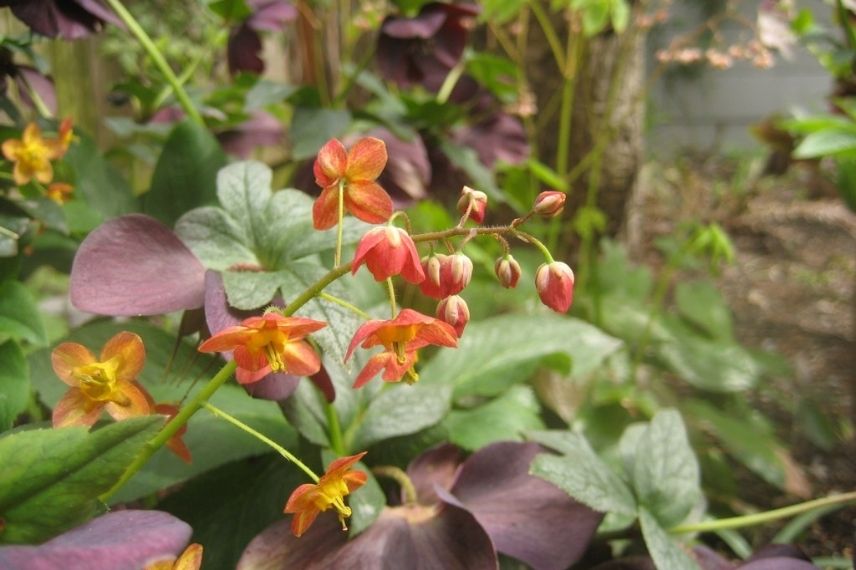
Epimedium warleyense (photo Chris Mealy – Flickr)
Epimedium ‘Amber Queen’
The main advantage of Epimedium ‘Amber Queen’ is undoubtedly its longer and more abundant flowering compared to other epimediums. This hybrid blooms continuously from April to June, showcasing on long floral spikes countless drooping flowers, yellow with a coppery centre and long, slender curved spurs. Its compact form reaches 40 cm in height with a spread of 30 cm. Its leaves, lanceolate, tough, and thorny, display reddish hues with green marbling. They turn dark green as they age. This semi-evergreen hybrid, developed by Robin White, is the result of a cross between Epimedium wushanense ‘Caramel’ and Epimedium flavum. Preferring cool, well-drained soils, the Elf Flower ‘Amber Queen’ finds its place in a large shady rockery alongside wall rue, three-leaved cress, a tiarella, or a dead nettle.
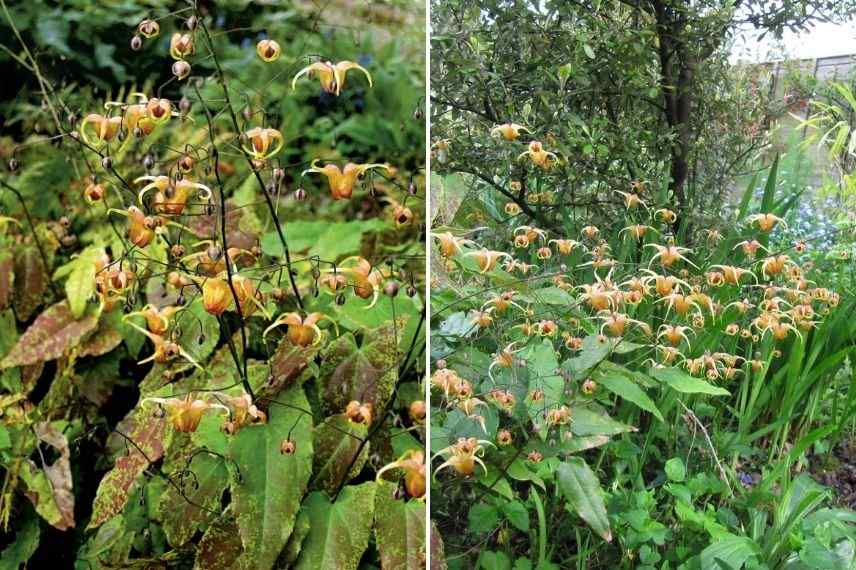
Epimedium ‘Amber Queen’ (photo by Leonara Enking – Flickr)
Discover other Epimedium - Barrenwort
View all →Available in 2 sizes
Available in 2 sizes
Available in 1 sizes
Available in 1 sizes
Available in 1 sizes
Available in 1 sizes
Available in 1 sizes
Available in 1 sizes
Available in 1 sizes
Available in 2 sizes
Epimedium acuminatum
The Epimedium acuminatum is a species of Chinese origin with evergreen foliage and a spreading habit. It forms a clump 30 to 40 cm high and can spread up to 50 cm wide. Its leaves are rather elongated and narrow, initially bronze-red in spring, then they turn green while retaining purplish brown spots. Finally, in autumn, they take on an orange hue still speckled with purple. Flowering occurs in early spring. The flowers with burgundy centres and white to lilac sepals then appear, showcasing strongly curved spurs that resemble claws or spiders. Like Epimedium grandiflorum, its flowers are particularly large. This Elf Flower thrives in shade or partial shade, where it grows easily in neutral to acidic, rich, and well-drained soil. Once well established, it can tolerate drought. The warm tones of this epimedium are perfect for highlighting the edge of a path or walkway. Plant it alongside spring-flowering bulbs (tulips, crocuses, hyacinths, Iris reticulata) or with perennials such as dwarf roses and delphiniums.
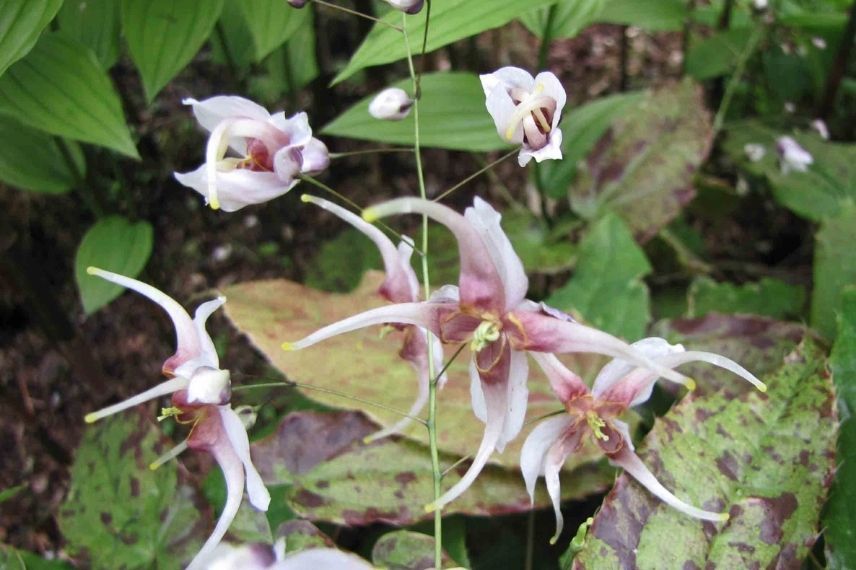
Epimedium acuminatum (photo 阿橋 HQ – Flickr)
Epimedium pauciflorum
Originating from the Sichuan province in China, Epimedium pauciflorum is a creeping species that gradually forms a beautiful carpet of evergreen foliage. Its clump is composed of leathery, heart-shaped leaves that are highly dentate and almost thorny. These emerge in spring in a light green colour, speckled with red, before becoming glossy and dark green over time. Its flowers are very elegant, grouped in pairs to fours on the flower spikes. They appear in spring, from April to June, revealing rounded white sepals and spurred white petals, silvered, sometimes with slight pale pink reflections. This species of epimedium is not the most floriferous of all (“pauciflorum” means “few flowers” in French), but the beauty and simplicity of its flowers is a good reason to highlight this Elf Flower. In shade or partial shade, be aware that this epimedium is very drought-resistant. This specimen is perfect for covering soil, paired with a Bergenia, a Geranium macrorrhizum, a Blanda anemone, and Deinanthe caerulea.
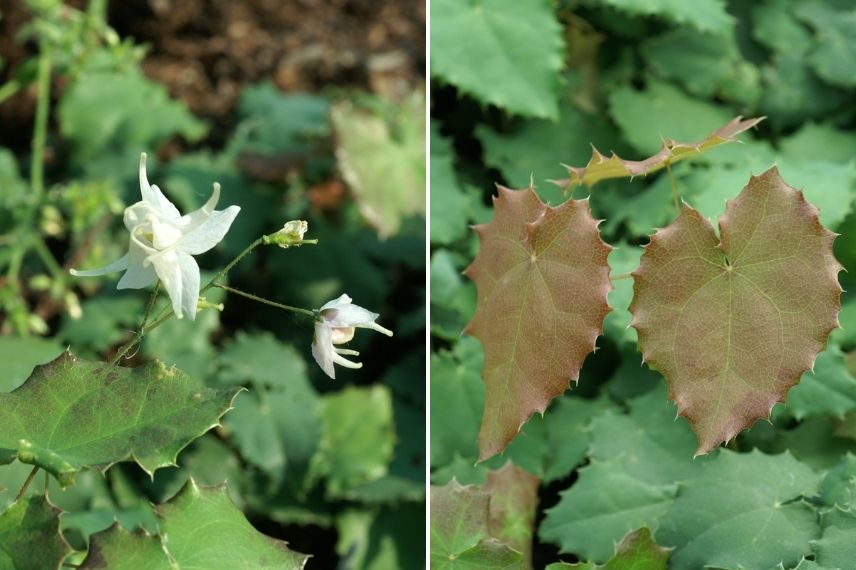
Epimedium pauciflorum
Epimedium alpinum
Small wild species native to the mountainous regions of Europe, also known as “Alpine barrenwort”, Epimedium alpinum stands out from other fairy flowers due to its unique bicoloured flowering. From April to May, this barrenwort produces inflorescences with yellow petals and reddish-brown calyxes. In spring, this species displays evergreen, glossy foliage with a very fresh, apple-green colour. The leaves gradually darken until winter. The heart-shaped leaves are slightly dentate. This very hardy fairy flower, about thirty centimetres tall and 40 cm wide, is ideal as a groundcover plant in a partially shaded alpine rockery, accompanied by meadow anemone, ‘Album’ avens, or black mountain cornflower.
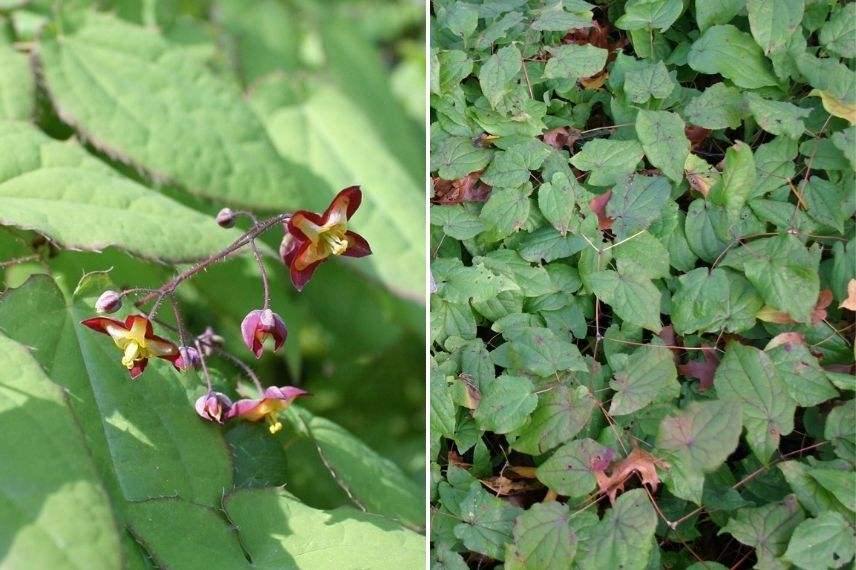
Epimedium alpinum (photos Anneli Salo and Ryan Somma – Flickr)
Epimedium perralchicum ‘Frohnleiten’
The Epimedium perralchicum ‘Frohnleiten’ is a German cultivar renowned for its vigour and excellent ground-covering ability. With its rhizomes, this low fairy flower (30 cm tall) is an outstanding groundcover that can spread up to 50 cm wide. Its green foliage, carpeting is very decorative, purplish in spring, then mottled with red in autumn. Its leathery, glossy, pointed leaves are evergreen in mild climates. The golden yellow flowering occurs from April to May and resembles the bright colour of yellow daffodils. The small, shiny flowers with well-rounded sepals have tiny brown spurs. Even tolerating partial dry shade once established, you can plant the epimedium ‘Frohnleiten’ at the base of trees or bushes and allow its dense growth to develop alongside lesser periwinkle, columbines, sweet woodruff, and hart’s-tongue fern.
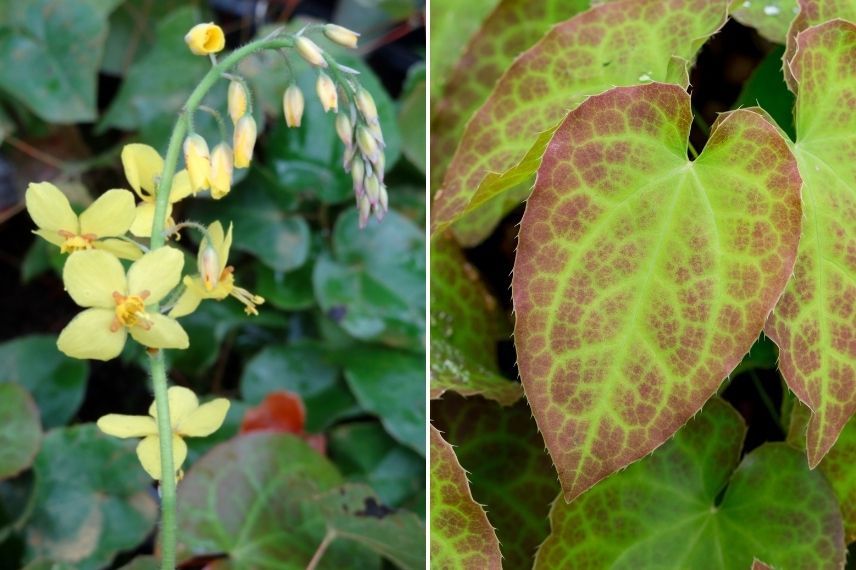
Epimedium perralchicum ‘Frohnleiten’
Epimedium x versicolor 'Cupreum'
The Epimedium versicolor ‘Cupreum’ stands out with a slightly earlier flowering than the previously mentioned epimediums. Indeed, the small flowers of this epimedium bloom from March to April. The delicate bicoloured inflorescences, dressed in coppery pink and pale yellow, are perched on flexible stems and hover above the tuft of narrow leaves. The young foliage is persistent with purple and copper marbling in spring, turning green in summer. This rhizomatous perennial can thrive in poor soils and is not afraid of root competition. The epimedium ‘Cupreum’ forms beautiful cushions at maturity (about 30 cm in all directions). It easily finds its place at the edge of woodlands, in soil rich in humus, accompanied by a variegated Solomon’s seal, heucheras, wall pennywort, a wood anemone, and a variegated ivy.

Epimedium versicolor ‘Cupreum’
For further reading
Discover our ideas sheet for associating epimediums
Everything you need to know about Epimedium, Flower of the Elves: how to plant, grow, and maintain
For more options, feel free to check out our entire range of Flowers of the Elves on our site.
- Subscribe!
- Contents
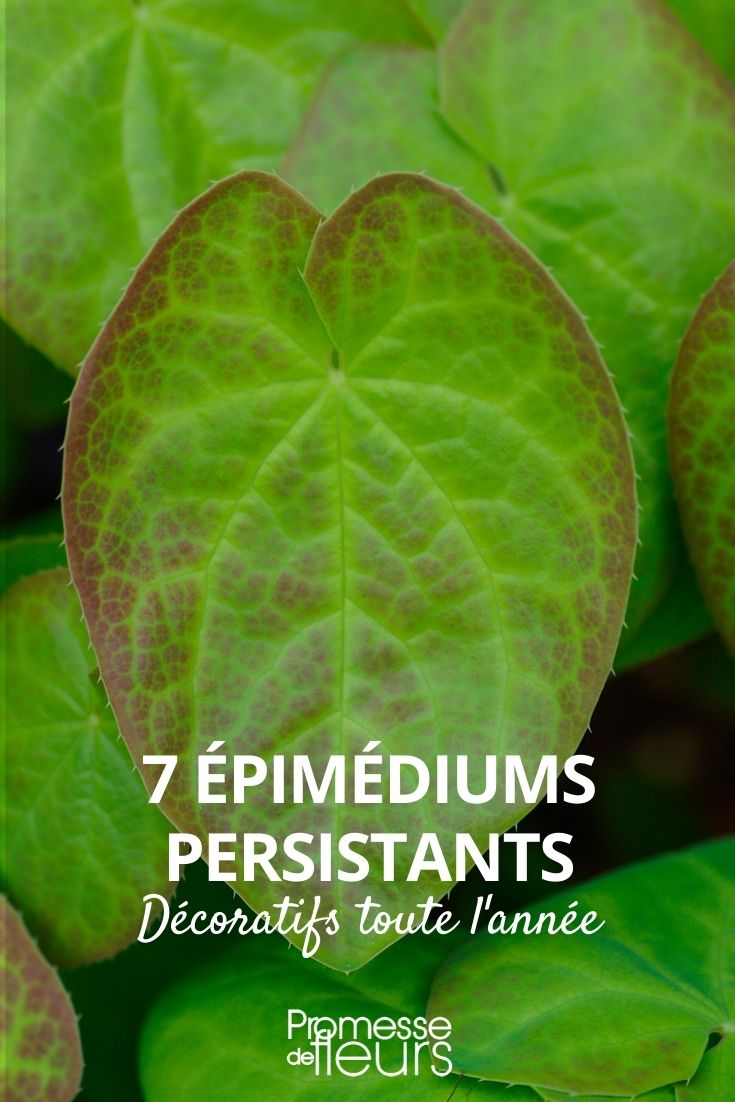































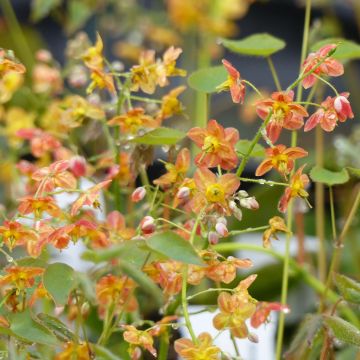
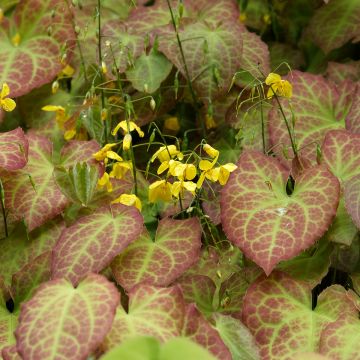
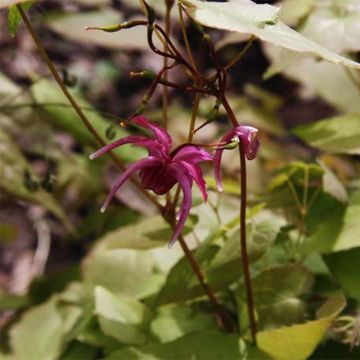
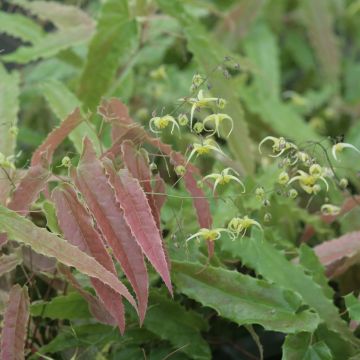
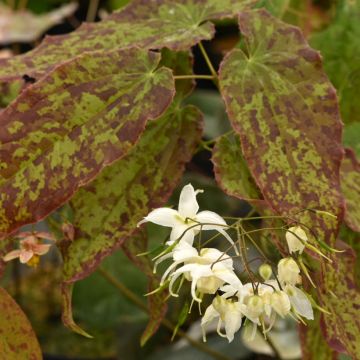

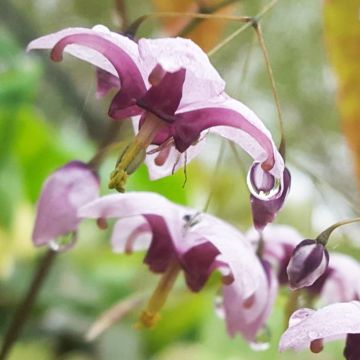
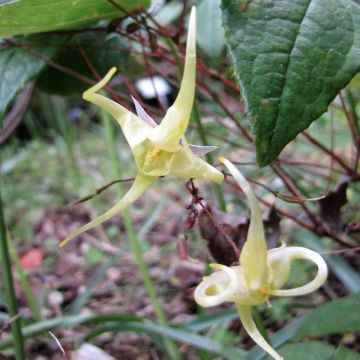
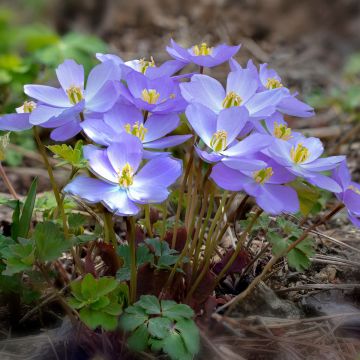
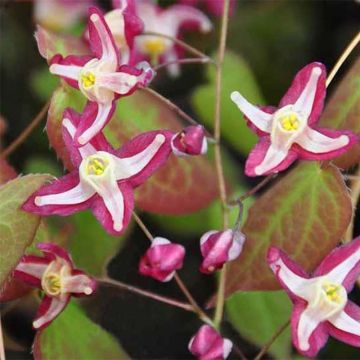
Comments